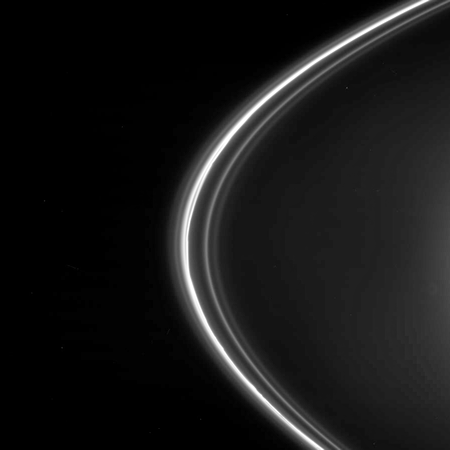so you are saying, there are multiple rings. And basically, it is not one solid ring but a combination of many tiny objects and all act like moons?
Yes, that's how these rings are. In fact, some of the objects in the rings are called moonlets, not big enough to be a moon and too small to be a random pebble. They are natural satellites of Saturn. There are small gaps in the rings which are carved out by moonlets and the larger gaps are carved out by moons. The best things about these rings is...THEY ARE FREAKING BEAUTIFUL


Click to see the full image...it's worth it!
This ^^ is the F-ring is a small ring carved by two small moons of Saturn, Pandora and Prometheus. One orbits outside the ring and the other one orbits inside the ring. Often when Prometheus passes by the particles in the F-ring, it perturbs them as they're gravitationally attracted to the larger moon. That's what's seen above by the Cassini space probe. Here's an animation of the F-ring, you can see the moons passing by.

The picture below is my personal favourite. It was taken by Cassini a few months ago. You can see the rings so clearly in this picture, and they look stunning. The F-ring in this picture is the outer most ring.

Click to see in full-res.
For more images from Cassini, go here:
http://www.ciclops.org/index.php


